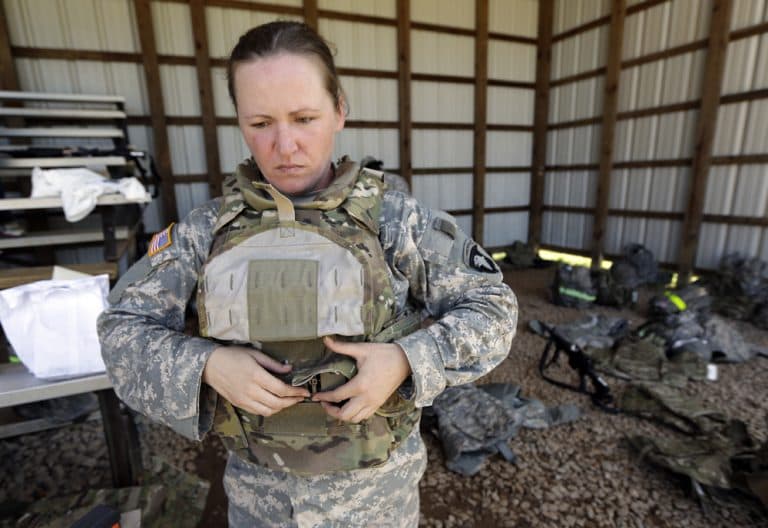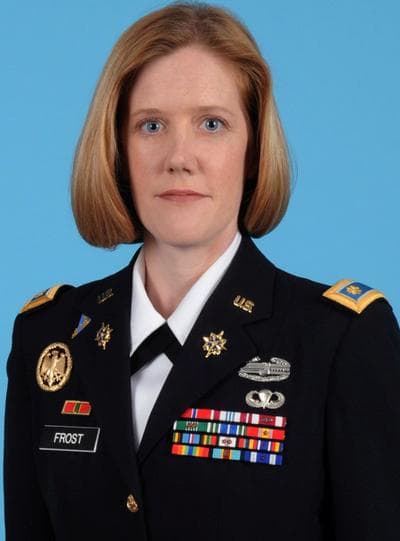Advertisement
What It's Really Like To Be A Woman In Combat
Resume
Leon Panetta has been defense secretary for only 18 months, but he is already leaving a major legacy.
He oversaw the dismantling of "Don't ask, don't tell," and is now removing the 1994 ban on woman serving in combat.
Women have unofficially been in combat for decades, with nearly 900 women wounded and 152 killed during the wars in Iraq and Afghanistan.
The lifting of the ban prompted one male Marine to ask, in Thursday's Wall Street Journal, whether the government has considered the humiliating situations that combat troops often find themselves in on the battlefield, where troops have little personal space.
We spoke with Tanya Biank, author of "Undaunted: The Real Story of America's Servicewomen in Today's Military," and Maj. Candice Frost, a West Point graduate who has been in the Army for 15 years and served two tours of duty in Afghanistan.
____Interview Highlights____

Maj. Candice Frost responds to concerns that women cannot physically do what men do:
"I had some outstanding soldiers who served for me when I was a company commander. And some of my soldiers did an outstanding job with rucksacks just as heavy as their male peers’. And were able to climb many of the same mountains, walk in the same footsteps that those male soldiers did. And were able to collect vital intelligence that served and actually saved lives of American soldiers and targeted Taliban forces. So I can say proudly that I have served with many women who have walked in those same footsteps of their male peers."
Frost responds to claims that mixed gender situations in unhygienic and close quarters would be uncomfortable and distract from the mission:
“When you’re on a convoy and you’re driving hours and hours at a time, you’re at a point of exhaustion where it doesn’t matter the gender, you just have to use the bathroom. The Army figures out ways, and we’re pretty inventive on where we can choose to defecate or choose to use the bathroom... When you’re in the middle of combat at a point of exhaustion and you’re tired and you have to strip down and change your clothes, really, I don’t think at that point you’re not looking around to even think of those barriers at the time. You just are so focused on the mission, and I know that so many of my male counterparts were able to do that on many of the convoys I was. They saw me as a solider. They saw me as an officer. They didn’t see me as a female... and I didn’t feel those prejudices at all."

Tanya Biank responds to concerns that allowing women in the military is a form of social experimentation:
“I would like to think that the military realized the time is now for change... There have always been critics and controversy surround servicewomen and change. I’m sure critics in 1967 were against lifting the ban against women rising above the rank of lieutenant colonel. I’m sure there were critics who did not want women to enter the service academies in 1976. I don’t think this has to do with social experimentation, because the stakes are too high. The reason, I believe [the military is lifting the ban on women in combat], is because of the performance of servicewomen in ground combat over the last decade in Iraq and Afghanistan. They have performed phenomenally. They have done more than just pull their own weight."
Guests:
- Tanya Biank, author of "Undaunted: The Real Story of America's Servicewomen in Today's Military."
- Maj. Candice Frost, West Point graduate who has been in the Army for 15 years. She served two tours of duty in Afghanistan.
This segment aired on January 24, 2013.